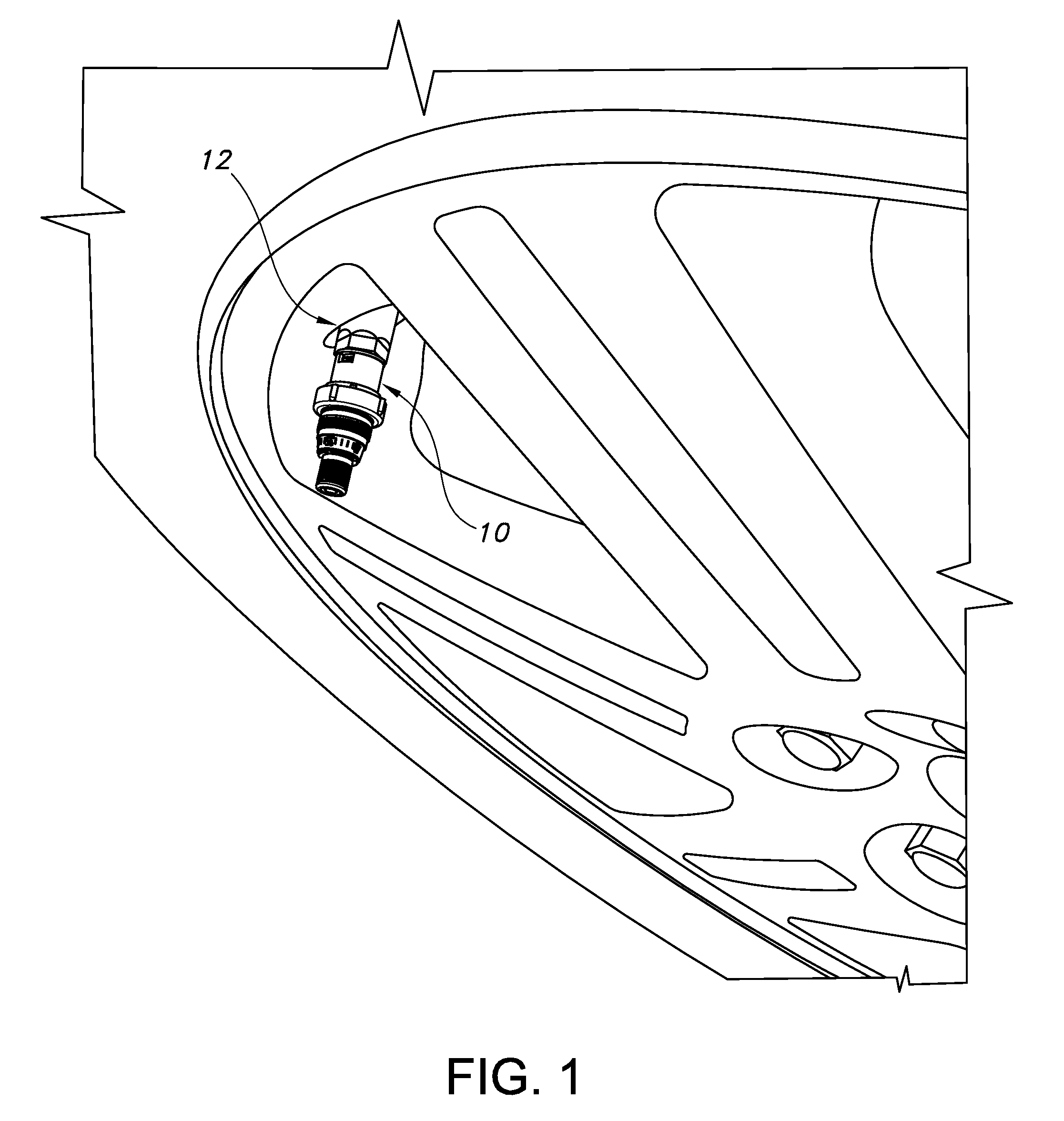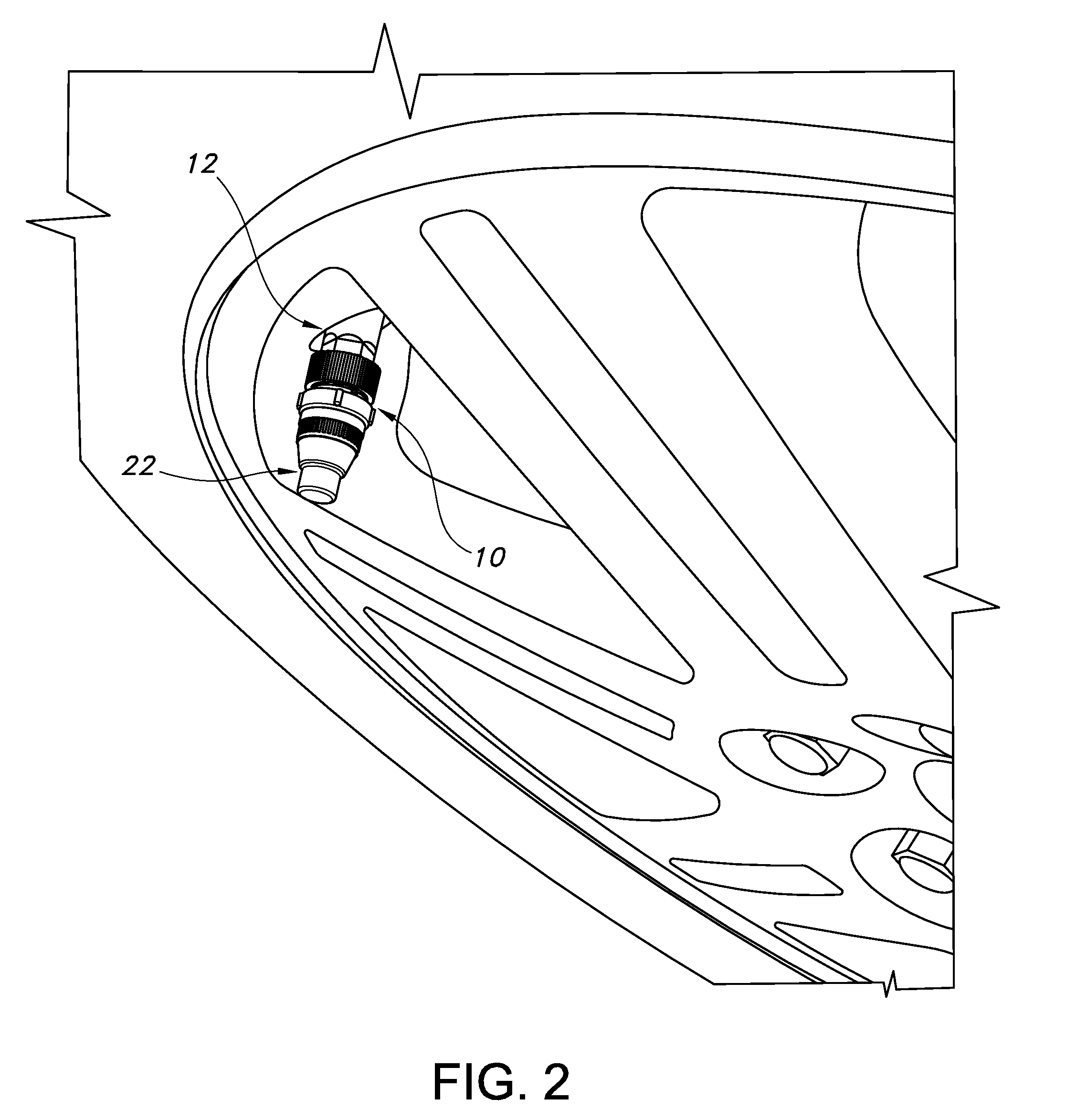Stem-mounted tire inflation pressure regulator
a pressure regulator and tire technology, applied in the direction of valve operating means/releasing devices, functional valve types, transportation and packaging, etc., can solve the problems of reducing fuel economy, increasing stopping distance, and lowering hydroplaning speed, so as to prevent undesired air loss, prevent inflation, and protect the effect of the sam
- Summary
- Abstract
- Description
- Claims
- Application Information
AI Technical Summary
Benefits of technology
Problems solved by technology
Method used
Image
Examples
Embodiment Construction
[0028]A stem-mounted tire inflation pressure regulator constructed in accordance with the current embodiment of the invention is illustrated in the drawings and generally designated 10. As illustrated in FIGS. 1-2 and 5-7, the regulator 10 is mounted on conventional tire stem 12 of a conventional wheel. The regulator 10 receives a conventional air nozzle 14 as illustrated in FIGS. 6-7 to permit filling of the vehicle tire. A valve assembly 20 within the regulator 10 permits air to flow from the air nozzle 14 to the valve stem 12 until a preset pressure is achieved within the tire. The valve assembly 20 then snaps closed to prevent further filling of the tire beyond the present pressure. After the valve is closed, air from the nozzle 14 is diverted through an audible device to provide an audible signal to the operator.
I. Regulator
[0029]As perhaps best illustrated in FIG. 5, the regulator 10 includes an upper assembly 16, a lower assembly 18, and a valve assembly 20. In addition to th...
PUM
 Login to View More
Login to View More Abstract
Description
Claims
Application Information
 Login to View More
Login to View More - R&D
- Intellectual Property
- Life Sciences
- Materials
- Tech Scout
- Unparalleled Data Quality
- Higher Quality Content
- 60% Fewer Hallucinations
Browse by: Latest US Patents, China's latest patents, Technical Efficacy Thesaurus, Application Domain, Technology Topic, Popular Technical Reports.
© 2025 PatSnap. All rights reserved.Legal|Privacy policy|Modern Slavery Act Transparency Statement|Sitemap|About US| Contact US: help@patsnap.com



